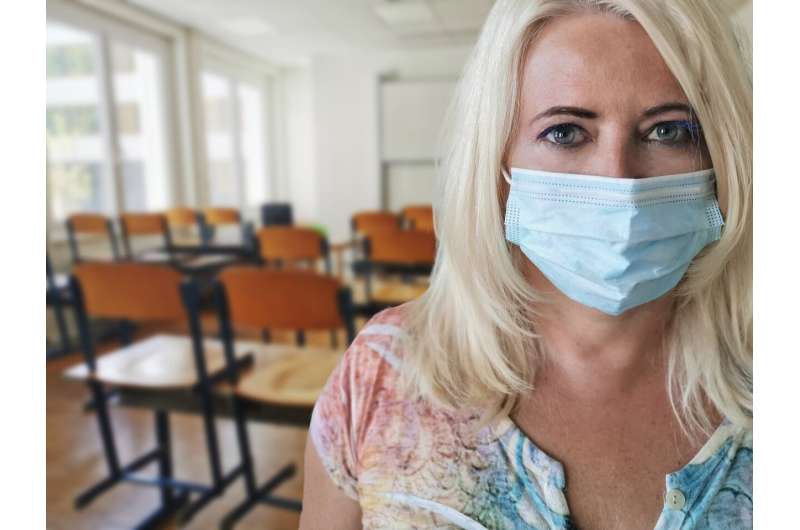
Primary and secondary school staff were not at greater risk of death from COVID-19 in 2020 compared to other professions in England and Wales, new research has found. The study, by researchers at the University of Bristol, analyzed data from the Office for National Statistics (ONS) national death register for school staff and working adults aged between 20- and 64-years-old.
The aim of the study, published today [24 November] in BMJ Open, was to estimate occupational risk from COVID-19 among school staff—teachers, teaching and lunchtime assistants—using ONS mortality data from England and Wales between 8 March to 28 December 2020.
The ONS regularly collects mortality data for people living in England and Wales and publicly releases data on deaths by occupation from COVID-19 and all other causes. The researchers used this data to compare mortality risk among school staff and working aged adults in England and Wales. Mortality rates among teachers were also compared to all professionals because due to socioeconomic factors there are large differences in mortality risk by occupation.
The researchers found across occupational groups there was a strong correlation between COVID-19 mortality and non-COVID-19 mortality. The mortality rates for deaths with COVID-19 were low among people working in schools (ten per 100,000 in female primary school teachers to 39 per 100,000 in male secondary school teachers) compared to many other occupations (nine to 50 per 100,000 in women; from ten to 143 per 100,000 in men).
The study found there were fewer deaths than the five-year average among female primary and secondary school teachers and the number of deaths among male teachers were similar to the five-year average. There were more deaths among teaching assistants compared to the five-year average, but only around half of the excess deaths were thought to be attributable to COVID-19.
For all women working in schools combined there was a small increase in the number of deaths (5%) compared with the five-year average, but the number of deaths from COVID-19 was larger than the excess, suggesting that some people who died with COVID-19 may have died in a normal year from other causes.
For school staff over 65 years old there were large excesses in deaths compared with the average for the previous five years (74% for men and 37% for women), but only around a third of the excess deaths were thought to be attributable to COVID-19.
There was weak evidence that secondary school teachers had higher mortality risk from COVID-19 and primary school teachers had lower mortality from COVID-19 compared to all working aged people. Teaching and lunchtime assistants were not at higher risk of death from COVID-19 compared with all working aged people.
Sarah Lewis, Professor of Molecular Epidemiology in the Bristol Medical School: Population Health Sciences (PHS) at the University of Bristol and corresponding author on the study, said: “Our research found teachers and teaching and lunchtime assistants, aged between 20- and 64-years-old, were not at high risk of death from COVID-19 during the pandemic in 2020 compared to the working age population in England and Wales.
“There was weak evidence that the risk of death from COVID-19 for secondary school teachers was slightly higher than expected but overall, the mortality risks from COVID-19 for school staff and across all occupations were in proportion to their non-COVID mortality risk.”
The research team suggest policy makers when considering the impact of schools being open in future pandemics should be aware that during COVID-19 school staff were not at high risk of death compared to other occupations.
Source: Read Full Article
